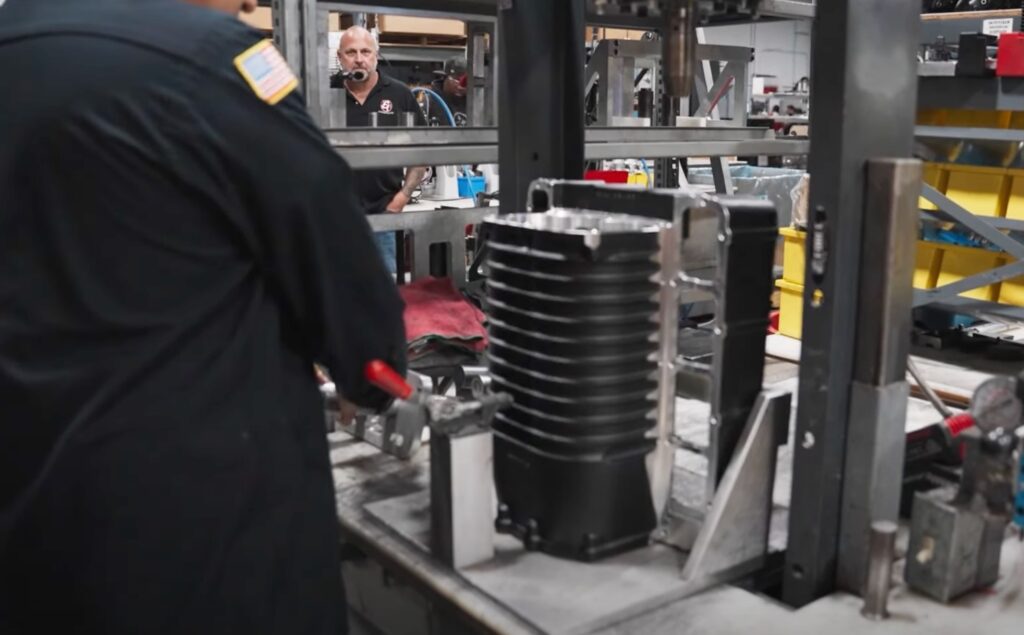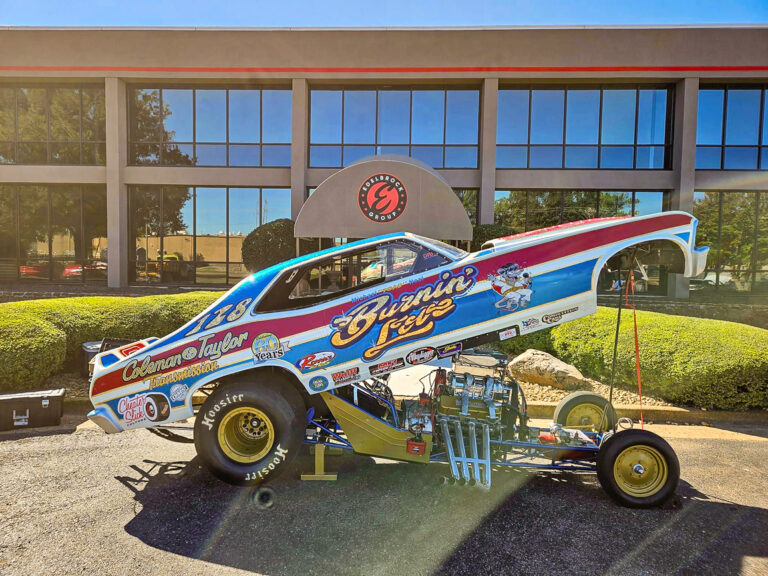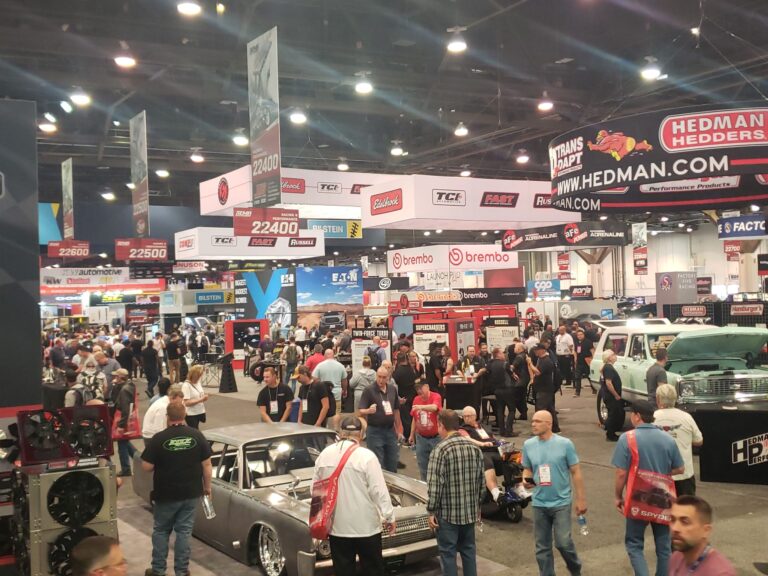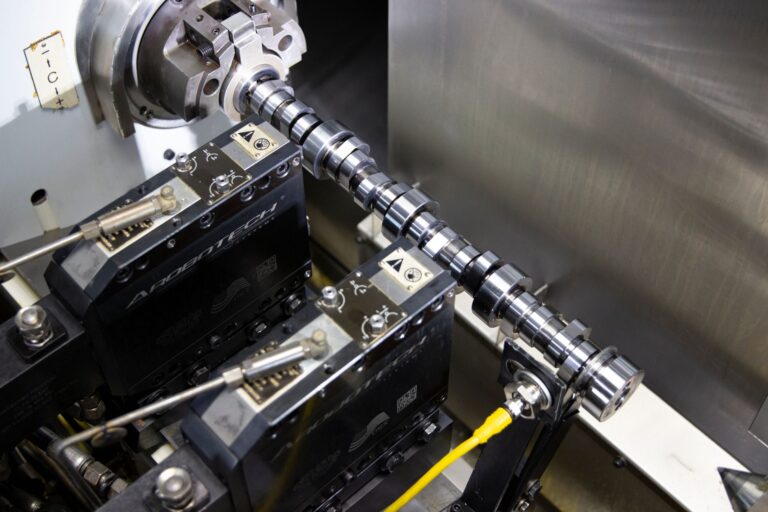See firsthand how a supercharger is made!
The Edelbrock Group of power brands is known for its vast support of the automotive aftermarket, including partnerships with racers. From camshafts to intakes, the Edelbrock Group has become more than legendary within the field of highly modified cars and race cars. To get a behind-the-scenes look, the brother and sister Formula Drift team of Branden and Amanda Sorensen took a tour of the Edelbrock foundry facility to see how things are made.
Specifically, the team was interested to know the process behind what makes a supercharger worthy of the Edelbrock name. The Sorensens had an eye-opening experience seeing the inner workings of the manufacturing plant while taking us along for the ride in an excellent video showing the attention to detail and passion put into each product. They learned a lot on the tour with Edelbrock’s David Page and Wilber Perez, who take viewers through the whole process from raw materials to final assembly.
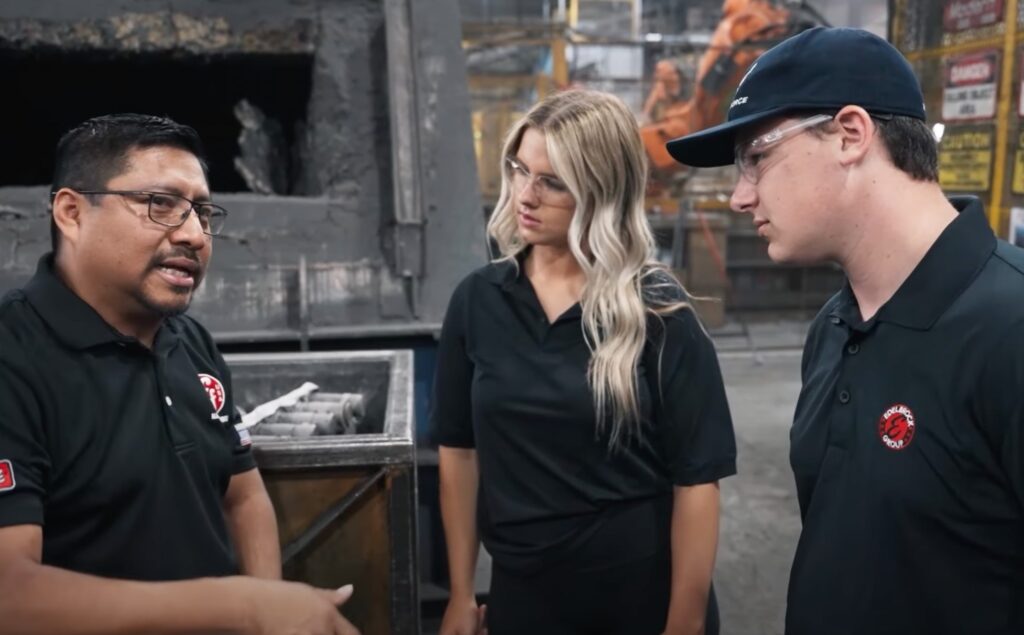
Donning safety glasses, the Sorensens get their first look into the factory floor where the vast majority of work is done by hand. David explains the first step in the process is creating a core for the supercharger. The core is a one-time use sand casting bound together by a chemical and heat process that replicates the internal dimensions of the powerful compressor. Binding the sand to make a core is a critical step and is prone to imperfections, so Edlebrock quality checks the first of every 45 molds off the line to ensure the machines are set up properly before completing the run.
These cores are set inside the outer black-sand mold and filled with 1,330-degree liquid aluminum used to create the outer shell of the supercharger. As the metal cools, it hardens into the shape of the voids left between the outer mold and inner core. At the end of the assembly line, the part is freed from the sand mold to reveal the “soft” casting of the power adder. Employees then cut and grind off the raw unusable parts of the casting before they are sent to a second building for heat-treating.
The castings are put into an oven that cooks them at 980 degrees F for about eight hours. Next, they are quenched in 110-degree water before being heated again at 320 degrees for four hours to further harden the castings before heading off to powder coat and the finishing process.
Dave and Wilber leave the Sorensens with Craig to explain the finishing process, which involves machining and assembly. All of Edelbrock’s superchargers are made in-house at the San Jacinto facility. The machining of the case takes about 40 minutes to complete before it is sent over to QC to check using a Coordinate Measuring Machine (CMM). Once checked, it is on to installing the bearings and rotors in the case. The entire process from start to finish is approximately 3 weeks, and every supercharger is inspected before they go out the door.
The Sorensen team ends up the video with a tour of the Edelbrock quality facility with Jason and Brad. They get an insider’s look at some of the history as well as the “clean room” where parts are checked for tolerances. Lastly, they get a tour of the “toy barn,” with all of the R&D vehicles. To wrap everything up, Amanda gets the opportunity to check out the horsepower on a twin-force-turbo-equipped Ford F150. Some people get all the fun jobs.
You can follow Sorensen Motorsports on Facebook and Instagram using the links below:
https://www.facebook.com/sorensenmotorsports
https://www.instagram.com/sorensenmotorsports/
